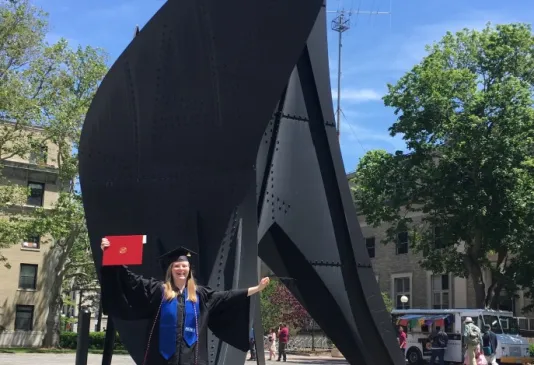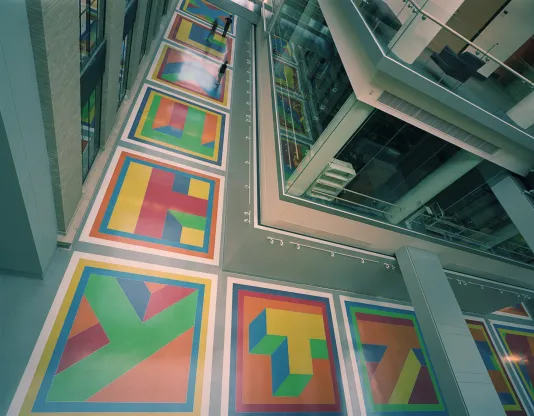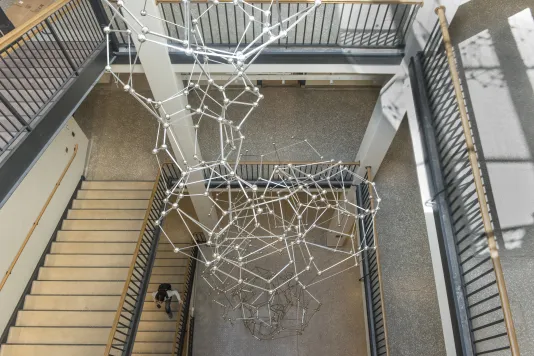Congratulations to the class of 2020! We wish we could be together to celebrate your successes and we hope that art will continue to be a part of your life in whatever you do next.
For this week’s List At Home newsletter, we passed the mic to a few of our incredible student guides to hear about their favorite works from the Public Art Collection. The List Center launched its student guide program in January 2017, and now it is an integral part of our programming and engagement with MIT undergrads. This week we say goodbye to three of our graduating senior guides. Over the years, they have conducted hundreds of tours of the public art collection and assisted with artist programs. Throughout their time, they were able to enjoy special access to visiting artists and groups as well as learn about the behind-the-scenes of the museum. We also welcomed two new guides to the program this spring term, but quickly had to adjust and welcome them through virtual training. Each of the graduates have adapted one of their favorite tours into a self-guided experience that we are launching over the course of the next month on our mobile public art map.






